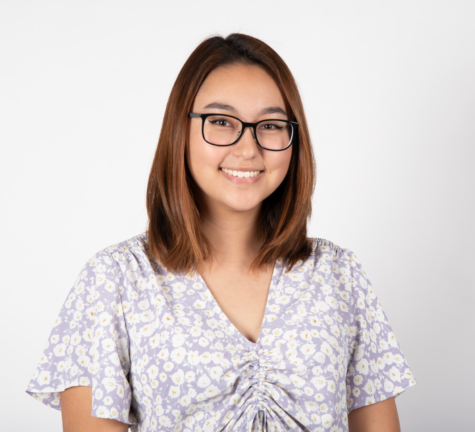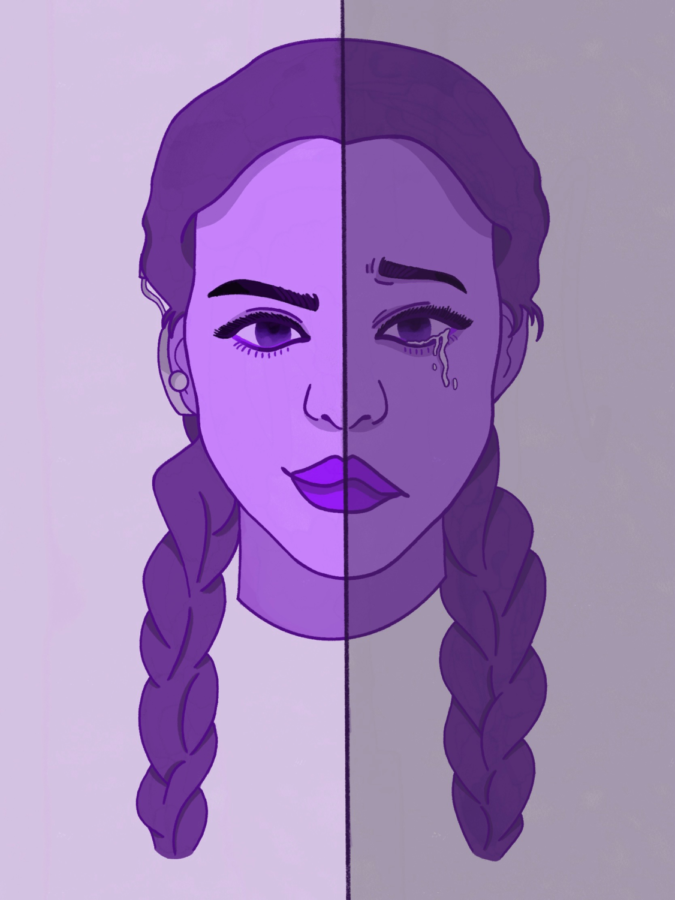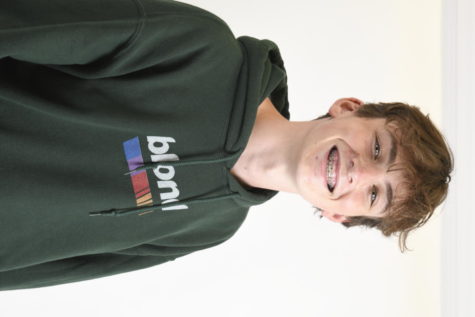More than meets the eye
Students with both mental and physical disabilities struggle to have their experiences understood
Mental Disabilities
by Allie D’Amato
The stress of completing assignments with enough time. The inability to focus during class instruction. The prospect of being judged by others and singled out because of a behavioral or genetic difference. These are all very prevalent hardships faced by people who struggle with mental health issues or mental disabilities.
Several students at RUHS possess inherent or developed mental conditions, ranging from ADD and ADHD to autism, dyslexia and anxiety. Though seemingly typical students, they are usually subjected to “greater hardships” when faced with academic material according to junior John Doe who has low processing speed.
“There are a lot more students who have mental disabilities and mental health issues than we realize. You never know who may need additional assistance or who is going through a harder time because they are hindered by their mental struggles. With my low processing speed, I tend to take a lot of time to get through work that is piled upon me; it takes a while for me to understand the content,” said Doe.
Many of these conditions permit 504 plans or Individualized Educational Plans (IEPs); these initiatives are both designed to provide accommodations to students with either mental or physical disabilities.
“It seems like most students struggling with mental disabilities at school have 504 plans. My plan mainly allows me to ask for extra time on assessments and assignments. I’ve had to use my plan quite a bit this year, especially being in so many AP classes and jumping right back into in-person learning after the pandemic,” Doe said.
For Doe, learning has been “fairly difficult” this year. He feels as though some staff members and teachers are respecting his accommodations, but others have made it hard for him to transition smoothly back to an in-person learning environment.
“With low processing speed, it’s hard for me to absorb information and retain it, so I require extra time in order to really grasp the content. My counselor has been a great resource. She’s advocated on behalf of me, and I always try to tell her when I’m having trouble in certain classes. I know on some occasions she has taken the time to sort things out and allot me more time to finish my assignments,” Doe said. “On the other hand, I’ve had bad experiences with a couple of teachers where they don’t really recognize my need for extra time. They think I can finish loads of work in such a short amount of time.”
When staff members fail to adhere to students’ 504 plans, Doe, among other students, becomes “increasingly stressed” due to the pressures placed upon him. Each student should be allowed to use their accommodations freely; however, when they are hindered by teachers, they grow “weary” and “anxious,” as observed by freshman Johnny Appleseed, who has anxiety. Appleseed feels as though this may lead them to perform worse on classwork or assessments.
“It’s a small thing, but chewing gum really helps me stay focused in class. I have anxiety on top of reading comprehension issues, so it’s really hard for me to pay attention in class. I get jittery and fidgety and having the option to chew gum really centers me and calms me down. In the past, some teachers haven’t respected this accommodation, and in those classes, I found myself falling behind,” said Appleseed.
Many actively use their 504 plans in order to compensate for the limitations of their mental conditions, and some students have had their 504 plans throughout middle school into high school.
“I remember when I was little, my mom noticed some of my struggles in the classroom, and she asked around to see what she could do to help. Eventually, I got my 504 plan, and I’ve been using it ever since. I definitely think I’d be in a much worse place, both mentally and academically, without my plan. I mean, I can’t really remember a time where I didn’t have it readily accessible, so it gets frustrating when teachers don’t respect it since I’ve become dependent on it,” Appleseed said.
Some students who struggle with mental disabilities feel “misunderstood” due to the fact that the general population of high school students isn’t widely knowledgeable about certain mental health conditions; people can sometimes “come off as insensitive,” says junior Nicholas Carrozza, who struggles with autism and attention deficit disorder (ADD).
“A lot of people don’t realize that my behavioral differences are just a part of my nature,” Carrozza said. “I have autism, which is a genetic disorder – something I can’t control. I struggle a lot when managing my time, and my autism doesn’t allow me to gauge people’s feelings as well as I should. Sometimes teachers and other students mistake my actions or comments, and they perceive me a certain way without taking into account the circumstances. Don’t get me wrong – even though some students are wired differently, all we want to be is treated like normal human beings.”
The general lack of knowledge and consideration among students and staff alike puts forth the question of how well RUHS informs people about mental health awareness and encourages open conversations and forums about these topics.
“I don’t think the high school does a great job of bringing attention to ideas of mental health and mental disabilities — they are such prevalent subjects that affect a myriad of students, yet RUHS fails to make an effort to educate its general population. Honestly, it feels like they are keeping sensitive topics like these under wraps,” Carrozza said.
Doe and other students feel as though RUHS can “definitely take steps forward” when it comes to inclusion, improving upon its approach to students struggling with mental health conditions.
“There’s a prevailing stereotype regarding people with mental disabilities, and a lot of us get judged,” Doe said. “My accommodations are something I can easily hide, but it shouldn’t be that way. I shouldn’t feel skeptical or worried when I want to share with someone that I have a 504 plan. People with disorders are known to not be accepted. But we are all equal human beings, and we should be treated as such.”
Physical Disabilities
by Ben Ringel
In recent years, a primary focus of Redondo’s has been inclusion. Through diversified English reading sets, district-wide committees and critical class discussions, students are being exposed to fresh, diverse perspectives in order to cultivate a more socially-aware student body. While race, ethnicity, gender identity and sexuality are now common classroom discussions, another perspective important to include, according to deaf and speech-impaired student John Doe, whose name has been changed to preserve anonymity, is the one of students with physical disabilities. According to Doe, some RUHS students can be ignorant to what students like him go through.
“It does have an effect on my learning,” Doe said. “Whenever teachers play videos, I need to have closed captions. I need to sit at the front of the classroom, and I can’t hear if the air conditioning or any fan is on. There can’t be background noise. Group projects are also really hard.”
Doe has cochlear implants, a small electronic device he fits into his ears each morning, and his teachers wear a device connected to his implants that make hearing easier for him. Beyond the academic implications of his disability, being deaf has psychosocial effects as well.
“Being deaf does make me a little sad,” Doe said. “It’s really hard to socialize with people because I have a hard time hearing what they are saying to me. Sometimes it’s just a bunch of noises and I can’t even make out the words. All people have different tones and different ways of speaking that I have to get used to.”
Although Doe has experienced some bullying in elementary and middle school, both him and senior Gabe Berger, who has partial albinism, think the student body generally has good intentions. According to Berger, whose partial albinism is shown through differing pigmentation on his arms and parts of his face, some students are simply “unaware of how to properly interact” with someone with his condition.
“Should I have not been such a confident person, I probably would have been a source for bullying, but being a confident person, I kind of turned being different into one of my strengths. I get a lot of weird looks, especially if I’m wearing a short sleeve shirt, and a couple people will ask me if I bleach myself or if I was on fire,” Berger said. “I’m not ashamed of my skin in any way, but it does help when people ask so that I can tell them exactly why I look the way I look and they don’t have to speculate. I don’t like being pitied.”
According to Doe, his experience at school would be made better by students treating him with more patience.
“As a deaf person, I live in two worlds: a world where there is sound and a world where there isn’t,” Doe said. “I’m comfortable with students asking me about my implants or my hearing device. It’s okay to ask. I just wish students were more patient with me. It’s really difficult for me to communicate.
Beyond patience, Dr. Monica Mallet, a Special Day Class teacher and educational specialist who oversees students on the certificate of completion (as opposed to diploma) track, thinks students can tend to overfocus on our differences.
“When there are perceived differences, people don’t really understand that we’re all still the same. We all still have the same core values; we all want the same things; we all want love, understanding, friendship, companionship. We all need to eat; we all bleed red; we all have breath. It’s about understanding and having empathy for other people’s differences,” Mallet said.
Mallet helps oversee student Charlie Goeldner, who is diagnosed with autism, born with poor muscle tone and is mute, according to his mother Caz Walker-Goeldner. Because of this, RUHS provides Goeldner with multiple accommodations to help him navigate RUHS’ “vast campus.”
“He gets fatigued much sooner than most people would because he is building up his endurance. He has a walker to get him around campus, and his full-time aid Phyllis Rousse is with him as well. He can get around campus, but he has to be walked around and guided to ensure safety,” Walker-Goeldner said.
According to Mallet, the students at RUHS are typically understanding and empathetic. Compared to her work across Los Angeles county, she said the “students here are pretty remarkable.” Before the pandemic, able-bodied athletes and students with disabilities got to participate in a mentorship program in which students like Goelder got to try new sports and the athletes got to engage with students with special needs and “see how blessed they are for being able to run and jump.” The students in Goeldner’s Culinary Arts class have been very accepting as well.
“I see photos from his aid Phyllis all of the time. His classmates are very very accepting; they bake them cookies. His little team really helps him get involved with the cooking, and he thoroughly enjoys it,” Walker-Goeldner said.
Overall, Mallet says RUHS is “on the cutting-edge” of programming for students with mobility issues, and Walker-Goeldner is “pleased” with what the district and school administration do for her son. Additionally, RUHS’ new principal, Anthony Bridi, helped Mallet in establishing a horticultural garden, which has been “very therapeutic” for the students.
“We’ve been so fortunate. Since Kindergarten, the district has been amazing–very accommodating and they always make sure we are taken care of,” Walker-Goeldner said. “We are consistently talking about how we can help Charlie progress in life. His helpers–Dr. Mallet, Stephanie Powell [one of Goeldner’s teachers] and Phyllis–I could never ask for three better people to be standing beside me and giving me everything that I need to help us guide Charlie into life. They are family.”
With the funding and resources in place, Mallet said the most important thing is for students to continue to be empathetic and kind.
“We have a friendship circle club that will begin soon to meet every other Wednesday. Zachary Steinbrun is the president. We’re going to meet, connect, have some pizza from Fresh Brothers and get to know each other and see how students can help out,” Mallet said. “I think that people can just be friends. Don’t act like they’re different or there’s something wrong with them. Just treat them like you treat everyone else.”

a walking advertisement for the chicken pesto mozzarella sandwich you can conveniently buy for $12.45 at your local Lemonade




